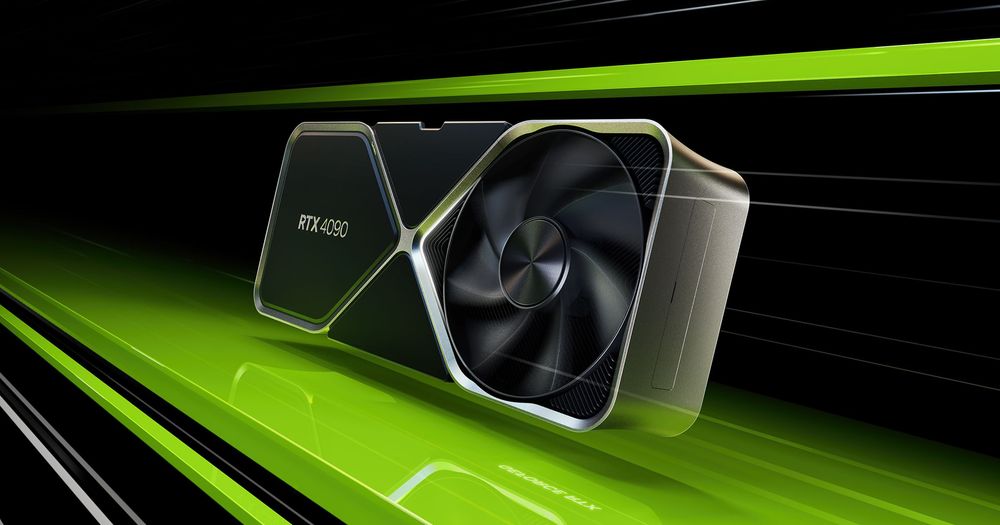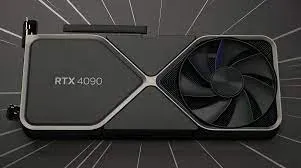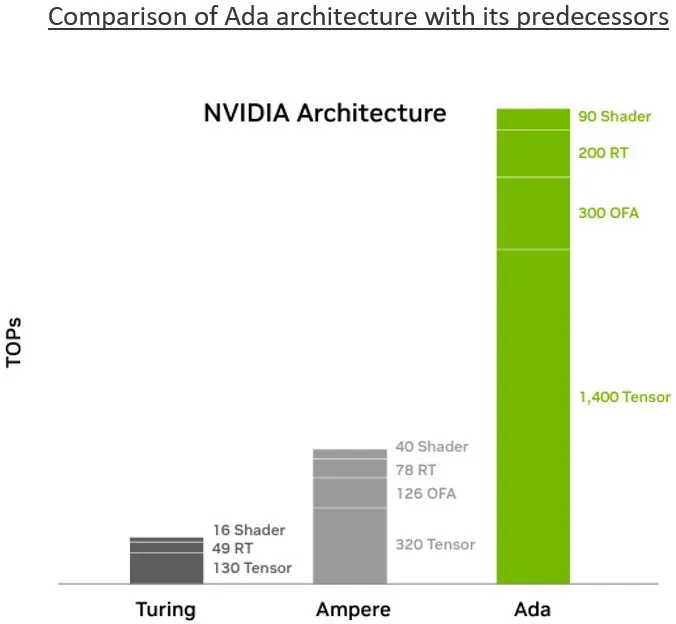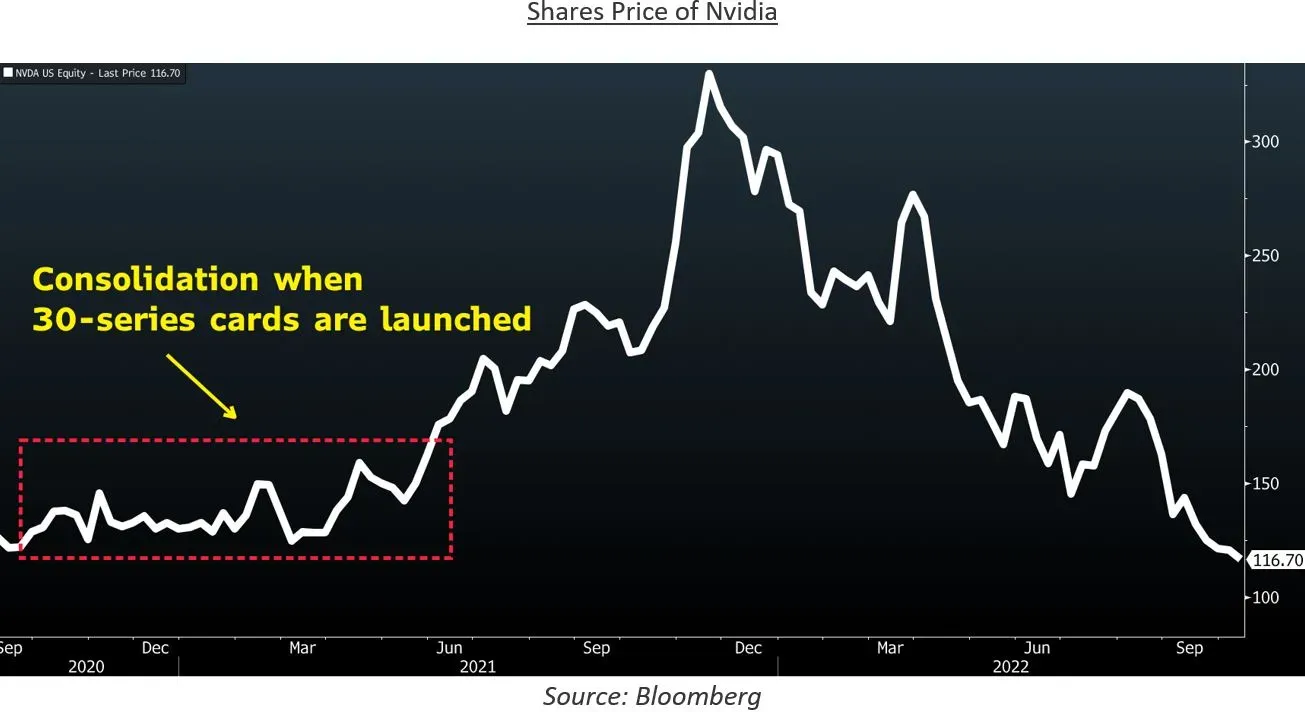Stocks
Will Nvidia's latest graphic card reverse its share price plunge?
By Guest Contributor EdxCapital • 11 Oct 2022 • 0 min read
Nvidia will begin shipment for the GeForce RTX 40-series graphics card

In this article
What happened?
Tomorrow marks a critical milestone for Nvidia.
Nvidia will begin shipment for the GeForce RTX 40-series graphics card, built on the new Ada Lovelace architecture.
This comes two years after its highly successful Ampere architecture of GeForce RTX 30-series graphics cards.

Next-generation Lovelace architecture
Named after the British mathematician Ada Lovelace, GeForce RTX 40-series is the next generation of graphics cards built on the Lovelace architecture. In contrast, the current 30-series is built on the Ampere architecture.
The new 40-series graphic cards promise to be “ahead of its time” with up to 2-4x greater performance than the Ampere generation. The ultra-efficient Lovelace architecture delivers a quantum leap in both performance and AI-powered graphics. As a result, users can experience lifelike virtual worlds with the lowest latency.

In terms of technical specifications, 40-series graphic cards are built on TSMC’s 4nm process and optimized with Micron’s GDDR6X memory. They are packed with new generational features including:
Fourth-generation Tensor Cores – to accelerate transformative AI technologies
Third-generation RT cores - to support real-time ray tracing
Shader execution reordering - to enhance shader performance
DLSS 3.0 - to generate high quality frames
AV1 Encoders – to support streaming videos

Lessons from the botched launch of GeForce 30-series
When Nvidia launch the GeForce 30-series on 17 September 2020, it was quickly sold out.
There were long lines of queue outside shops in the US and Japan. The demand was so high that Nvidia’s official web store went down. It subsequently led to Nvidia selling all Founder's Edition graphic cards at Best Buy. In addition, Nvidia had to delay the release of RTX 3070 cards by two weeks to guarantee availability.
The botched launch of GeForce 30-series was a result of:
Shortages of component parts for graphics cards
High demand from cryptocurrency miners
Lack of a smooth pre-order functionality such as the crashing of Nvidia’s online webstore
High demand from scalpers to resell at a higher price at thriving second-hand market.
As a result of the botched launch of GeForce 30-series, Nvidia is making its new product more exclusive with higher pricing. RTX 4090 will be shipped to consumers on 12 October at a pricey $1,599. For the RTX 4080 it will be made available in early November at $899 (12GB) and $1,199 (16GB). This is about 28% more expensive than the $699 for RTX 3080.
This is also a smart move, considering the inventory glut situation now. Recent demand for Nvidia’s graphics card has been sluggish due to the ongoing weakness in the gaming and cryptocurrency sector. Nvidia is clearing excess inventory by taking on a $1.2 billion inventory charge for data-center and gaming products.
Hence, we expect initial demand for the GeForce 40-series to be slow. But, they could pick up early next year once excess inventory is cleared in the current quarter.
Re-rating for Nvidia to come later, possibly early next year
Nvidia enjoyed a strong re-rating in its shares price from the successful Ampere architecture of GeForce 30-series graphics cards. From the launch of the GeForce 30-series to end 2021, Nvidia’s shares price more than doubled and rose 235%.
Most of the shares price increase came after a period (about 6 to 7 months) of consolidation from the launch of GeForce 30-series. Likewise, shares price of Nvidia could undergo a consolidation period with the launch of new GeForce 40-series. Once demand picks up next year, it could be a catalyst for the shares price to re-rate.

On a historical basis, Nvidia’s 2023 P/E is at 33.6x, more than 1 standard deviation below its 3-year mean of 35.8x. For FY 2024, P/E and earnings growth is expected to be at 26.2x and 28% respectively. This will put the PEG of Nvidia at an affordable 0.9x.
Its current shares price is now at $116.7, having fallen about 60% this year. Now, it is even below $124.64, the shares price when it first launched the 30-series graphics cards on 17 September 2020.
The shares price has come full circle despite a successful two years of GeForce 30-series graphics cards.
Nvidia is clearly unloved now. But this could change with its new Lovelace generation of GeForce 40-series graphics cards.'

The article is contributed by EdNeverSlumber. You can read more of his investment insights on his substack.
This article was first published on 11 October 2022 .
Read also
Gain financial insights in minutes
Subscribe to our free weekly newsletter for more insights to grow your wealth
0 comments